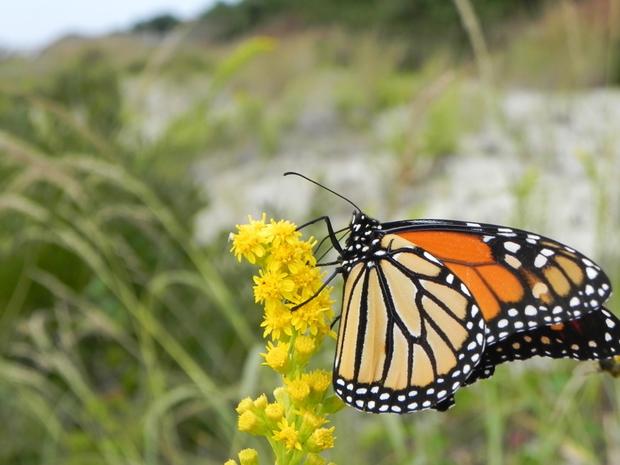Labor Day Marks The Start Of The Season For Monarch Monitoring Project
By Molly Daly
CAPE MAY, NJ (CBS) -- The unofficial end of summer marks the start of the season for the Monarch Monitoring Project in Cape May, which gathers data on and tags the orange and black butterflies as they travel to their wintering grounds. Monarchs are in trouble, but there are some glimmers of hope.
The Monarch Monitoring Project''s Mark Garland says the fragile-looking insects make an epic migration.
"Monarchs we have tagged in Cape May have been found in the mountains of Mexico."
That's a 2,000 mile trip, especially impressive for a creature that weighs about as much as a paper clip.
The butterflies fuel their flight with nectar. But Garland says feeding Monarch caterpillars isn't as easy.
"Many butterflies and moths have special adaptations where the caterpillars will only feed on certain types of plants, and for Monarch butterflies, it's got to be something in the milkweed family."
Listen to the full interview with Mark Garland in this CBS Philly podcast (trt: 9:52)...
Monarch Monitoring Project
And milkweed is disappearing, in part because of the widespread use of herbicide-tolerant crops.
"Traditionally lots of milkweed grew on the edges of farm fields, and agricultural practices now with genetically modified crops that are resistant to herbicides allow farmers to kill spread herbicides and kill all the weeds, including the milkweed."
Development and drought also take a toll. In 1996, overwintering Monarchs covered 45 acres. Last winter, they occupied a little more than an acre and a half.
But Garland says the Monarch Monitoring Project's data shows the East Coast population is holding fairly steady, which suggests gardening for wildlife is paying off.
"Maybe we've got a lesson to share with the rest of the country. New Jersey has the highest population density of any of the United States. And yet here, we've got people educated and enthused about doing things that will benefit Monarch butterflies, and it appears to be working."
"So, if, in the farm belt, they're going to lose the milkweed around the edges of the farm field," explains Garland, "if every farmer plants milkweed in a garden around their house, if every schoolyard has milkweed in a garden around the schoolyard, if every church has a little garden with milkweed, maybe we can compensate for the loss of the habitat that would otherwise be there."
If the Monarchs died out, it would rob the world of one of nature's greatest spectacles, something that still can be seen every October in Cape May.
"The geography of southern New Jersey causes these creatures to really concentrate down in Cape May Point. And when they look at that water crossing over to Delaware, if they're not ready to go, they're going to stop and rest and refuel. So we have this remarkable concentration of both birds and Monarch butterflies here."
"And," says Garland, "when the Monarchs are everywhere, it's like being inside an orange snowglobe. The sky is filled with these beautiful orange butterflies flittering around everywhere, and every garden is loaded with these butterflies as they're tanking up, trying to get the energy they need to travel 2,000 more miles.
Find out more about the Monarch Monitoring Project here.




